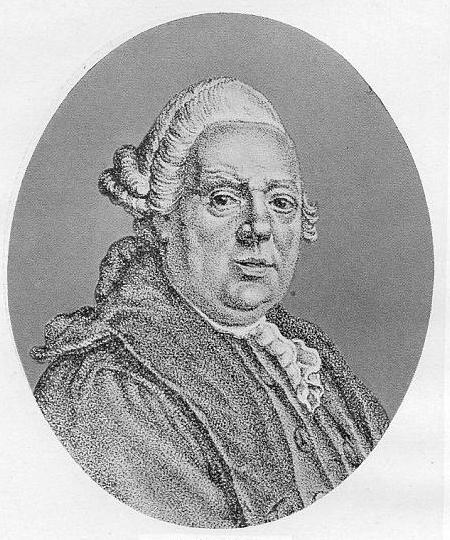|
Nundinal Cycle
The nundinae (), sometimes anglicized to nundines,. were the market days of the ancient Roman calendar, forming a kind of weekend including, for a certain period, rest from work for the ruling class ( patricians). The nundinal cycle, market week, or 8-day week ( la, nundinum. or ') was the cycle of days preceding and including each nundinae. These were marked on fasti using from A to H. The earliest form of the Roman calendar is sometimes said to have included exactly 38 such cycles, running for 304 days from March to December before an unorganized expanse of about 50 winter days. The lengths of the Republican and Julian calendars, however, were not evenly divisible by 8; under these systems, the nundinae fell on a different letter each year. These letters formed the basis of the later Christian dominical letters. Name The name ' was apparently formed from an early form of ' ("ninth") and ' ("day"), a root related to ' and ultimately the Proto-Indo-European root reconstruc ... [...More Info...] [...Related Items...] OR: [Wikipedia] [Google] [Baidu] |
List Of Roman Birth And Childhood Deities
In ancient Roman religion, birth and childhood deities were thought to care for every aspect of conception, pregnancy, childbirth, and child development. Some major deities of Roman religion had a specialized function they contributed to this sphere of human life, while other deities are known only by the name with which they were invoked to promote or avert a particular action. Several of these slight "divinities of the moment" are mentioned in surviving texts only by Christian polemicists. An extensive Greek and Latin medical literature covered obstetrics and infant care, and the 2nd century Greek gynecologist Soranus of Ephesus advised midwives not to be superstitious. But childbirth in antiquity remained a life-threatening experience for both the woman and her newborn, with infant mortality as high as 30 or 40 percent. Rites of passage pertaining to birth and death had several parallel aspects. Maternal death was common: one of the most famous was Julia, daughter of Ju ... [...More Info...] [...Related Items...] OR: [Wikipedia] [Google] [Baidu] |
Inclusive Counting
Counting is the process of determining the number of elements of a finite set of objects, i.e., determining the size of a set. The traditional way of counting consists of continually increasing a (mental or spoken) counter by a unit for every element of the set, in some order, while marking (or displacing) those elements to avoid visiting the same element more than once, until no unmarked elements are left; if the counter was set to one after the first object, the value after visiting the final object gives the desired number of elements. The related term ''enumeration'' refers to uniquely identifying the elements of a finite (combinatorial) set or infinite set by assigning a number to each element. Counting sometimes involves numbers other than one; for example, when counting money, counting out change, "counting by twos" (2, 4, 6, 8, 10, 12, ...), or "counting by fives" (5, 10, 15, 20, 25, ...). There is archaeological evidence suggesting that humans have been countin ... [...More Info...] [...Related Items...] OR: [Wikipedia] [Google] [Baidu] |
Inscription
Epigraphy () is the study of inscriptions, or epigraphs, as writing; it is the science of identifying graphemes, clarifying their meanings, classifying their uses according to dates and cultural contexts, and drawing conclusions about the writing and the writers. Specifically excluded from epigraphy are the historical significance of an epigraph as a document and the artistic value of a literary composition. A person using the methods of epigraphy is called an ''epigrapher'' or ''epigraphist''. For example, the Behistun inscription is an official document of the Achaemenid Empire engraved on native rock at a location in Iran. Epigraphists are responsible for reconstructing, translating, and dating the trilingual inscription and finding any relevant circumstances. It is the work of historians, however, to determine and interpret the events recorded by the inscription as document. Often, epigraphy and history are competences practised by the same person. Epigraphy is a primar ... [...More Info...] [...Related Items...] OR: [Wikipedia] [Google] [Baidu] |
Middle French
Middle French (french: moyen français) is a historical division of the French language that covers the period from the 14th to the 16th century. It is a period of transition during which: * the French language became clearly distinguished from the other competing Oïl languages, which are sometimes subsumed within the concept of Old French () * the French language was imposed as the official language of the Kingdom of France in place of Latin and other Oïl and Occitan languages * the literary development of French prepared the vocabulary and grammar for the Classical French () spoken in the 17th and 18th centuries. It is the first version of French that is largely intelligible to Modern French speakers, contrary to Old French. History The most important change found in Middle French is the complete disappearance of the noun declension system (already underway for centuries). There is no longer a distinction between nominative and oblique forms of nouns, and plurals ar ... [...More Info...] [...Related Items...] OR: [Wikipedia] [Google] [Baidu] |
Classical Latin
Classical Latin is the form of Literary Latin recognized as a literary standard by writers of the late Roman Republic and early Roman Empire. It was used from 75 BC to the 3rd century AD, when it developed into Late Latin. In some later periods, it was regarded as good or proper Latin, with following versions viewed as debased, degenerate, or corrupted. The word ''Latin'' is now understood by default to mean "Classical Latin"; for example, modern Latin textbooks almost exclusively teach Classical Latin. Cicero and his contemporaries of the late republic referred to the Latin language, in contrast to other languages such as Greek, as or . They distinguished the common vernacular, however, as Vulgar Latin (''sermo vulgaris'' and ''sermo vulgi''), in contrast to the higher register that they called , sometimes translated as "Latinity". ''Latinitas'' was also called ("speech of the good families"), ''sermo urbanus'' ("speech of the city"), and in rare cases ''sermo nobilis' ... [...More Info...] [...Related Items...] OR: [Wikipedia] [Google] [Baidu] |
Julius Modestus
The gens Julia (''gēns Iūlia'', ) was one of the most prominent patrician families in ancient Rome. Members of the gens attained the highest dignities of the state in the earliest times of the Republic. The first of the family to obtain the consulship was Gaius Julius Iulus in 489 BC. The gens is perhaps best known, however, for Gaius Julius Caesar, the dictator and grand uncle of the emperor Augustus, through whom the name was passed to the so-called Julio-Claudian dynasty of the first century AD. The Julius became very common in imperial times, as the descendants of persons enrolled as citizens under the early emperors began to make their mark in history.''Dictionary of Greek and Roman Biography and Mythology'', vol. II, pp. 642, 643. Origin The Julii were of Alban origin, mentioned as one of the leading Alban houses, which Tullus Hostilius removed to Rome upon the destruction of Alba Longa. The Julii also existed at an early period at Bovillae, evidenced by a very ... [...More Info...] [...Related Items...] OR: [Wikipedia] [Google] [Baidu] |
Nones (calendar)
The Roman calendar was the calendar used by the Roman Kingdom and Roman Republic. The term often includes the Julian calendar established by the reforms of the dictator Julius Caesar and emperor Augustus in the late 1stcenturyBC and sometimes includes any system dated by inclusive counting towards months' kalends, nones, and ides in the Roman manner. The term usually excludes the Alexandrian calendar of Roman Egypt, which continued the unique months of that land's former calendar; the Byzantine calendar of the later Roman Empire, which usually dated the Roman months in the simple count of the ancient Greek calendars; and the Gregorian calendar, which refined the Julian system to bring it into still closer alignment with the tropical year. Roman dates were counted inclusively forward to the next of three principal days: the first of the month (the kalends), a day shortly before the middle of the month (the ides), and eight days—nine, counting inclusively—before this ... [...More Info...] [...Related Items...] OR: [Wikipedia] [Google] [Baidu] |
Augur
An augur was a priest and official in the ancient Rome, classical Roman world. His main role was the practice of augury, the interpretation of the will of the List of Roman deities, gods by studying the flight of birds. Determinations were based upon whether they were flying in groups or alone, what noises they made as they flew, the direction of flight, what kind of birds they were, etc. This practice was known as "''taking the auspices''". The augural ceremony and function of the augur was central to any major undertaking in Roman society – public or private – including matters of war, commerce, and Religion in ancient Rome, religion. Augurs sought the divine will regarding any proposed course of action which might affect Rome's ''pax'', ''fortuna'', and ''salus'' (peace, good fortune, and well-being). Etymology Although ancient authors believed that the term "augur" contained the words ''avis'' and ''gerō'' – Latin for "directing the birds" – hist ... [...More Info...] [...Related Items...] OR: [Wikipedia] [Google] [Baidu] |
College Of Pontiffs
The College of Pontiffs ( la, Collegium Pontificum; see '' collegium'') was a body of the ancient Roman state whose members were the highest-ranking priests of the state religion. The college consisted of the '' pontifex maximus'' and the other '' pontifices'', the ''rex sacrorum'', the fifteen ''flamens'', and the Vestals. The College of Pontiffs was one of the four major priestly colleges; originally their responsibility was limited to supervising both public and private sacrifices, but as time passed their responsibilities increased. The other colleges were the '' augures'' (who read omens), the ''quindecimviri sacris faciundis '' ("fifteen men who carry out the rites"), and the '' epulones'' (who set up feasts at festivals). The title '' pontifex'' comes from the Latin for "bridge builder", a possible allusion to a very early role in placating the gods and spirits associated with the Tiber River, for instance. Also, Varro cites this position as meaning "able to do". The ''p ... [...More Info...] [...Related Items...] OR: [Wikipedia] [Google] [Baidu] |
Macrobius
Macrobius Ambrosius Theodosius, usually referred to as Macrobius (fl. AD 400), was a Roman provincial who lived during the early fifth century, during late antiquity, the period of time corresponding to the Later Roman Empire, and when Latin was as widespread as Greek among the elite. He is primarily known for his writings, which include the widely copied and read '' Commentarii in Somnium Scipionis'' ("Commentary on the Dream of Scipio") about ''Somnium Scipionis'', which was one of the most important sources for Neoplatonism in the Latin West during the Middle Ages; the ''Saturnalia'', a compendium of ancient Roman religious and antiquarian lore; and ''De differentiis et societatibus graeci latinique verbi'' ("On the Differences and Similarities of the Greek and Latin Verb"), which is now lost. He is the basis for the protagonist Manlius in Iain Pears' book '' The Dream of Scipio''. Name The correct order of his names is "Macrobius Ambrosius Theodosius", which is how it ap ... [...More Info...] [...Related Items...] OR: [Wikipedia] [Google] [Baidu] |





.jpg)


